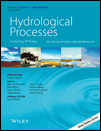How do hydrologists perceive watersheds? A survey and analysis of perceptual model figures for experimental watersheds.
To describe process knowledge at the watershed scale, hydrologists commonly refer to a ‘perceptual model’, an expert summary of the watershed and its runoff processes often supported by field observations. Perceptual models are often presented as a schematic figure, although such a figure will necessarily simplify the hydrologist’s complex mental model. In this paper, our aim was to understand what constitutes a visual expert summary of watershed process knowledge, and to evaluate how perceptual models could be used to share hydrological process information at larger scales. To do so, we conducted a systematic review of the literature and found 63 perceptual model figures. We counted and categorized the stores and fluxes in each figure using a taxonomic classification and quantified a variety of figure attributes including spatial or temporal zonation, inclusion of vegetation, soils, topographical and geological data and consideration of uncertainty. Our analysis showed that a typical figure has 1 surface flux, 4 subsurface fluxes, 3–4 subsurface stores and 0–1 channel stores; 28 out of 63 figures use sub-figures to show temporal dynamics (e.g., wet/dry conditions), and 12 out of 63 show spatial zones. Perceptual model figures, therefore, provide a concise summary of watershed processes with a complexity comparable to that of many conceptual hydrological models. However, only four figures showed any information on uncertainty or knowledge gaps. We recommend that perceptual figure value could be easily increased by consistent captioning of figures to assist automated search, and wider use of standard figure annotations such as legends and scale markings to ensure that information is fully conveyed to the user. If perceptual figures are proposed as a primary method for sharing process information, the hydrological community should consider how to link more detailed text descriptions to figures, and how to represent process uncertainty.

